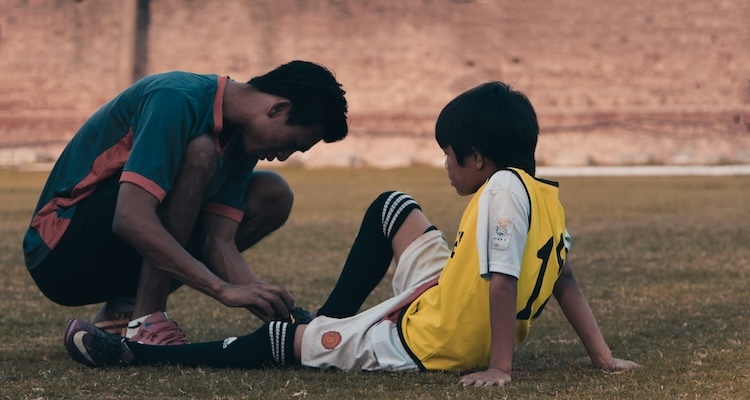
The knee is a crucial joint in the human body, supporting movement, balance, and stability. Because of its essential role, it is prone to injury, especially in sports that require running, jumping, and sudden directional changes. Knee injuries in athletes can range from mild to severe and can significantly affect performance and mobility. This article explores the most common knee injuries seen in sports, along with their causes and symptoms.
The anterior cruciate ligament (ACL) is one of the primary ligaments that provide stability to the knee. ACL injuries are among the most severe and are commonly seen in sports that involve pivoting, jumping, or rapid changes in direction, such as basketball, soccer, football, and skiing.
An ACL tear often happens when an athlete suddenly stops, pivots, or lands incorrectly after a jump. Collisions or contact, such as a direct blow to the knee, can also lead to ACL injuries, although non-contact injuries are more frequent.
A distinct "pop" or snapping sensation at the time of injury.
Immediate pain and swelling.
Instability or a sensation of the knee giving out, particularly when bearing weight.
Limited range of motion and difficulty walking.
The menisci are two pieces of cartilage that cushion and stabilize the knee joint, absorbing shock between the thighbone and shinbone. Meniscus tears are common in sports involving twisting movements, such as tennis, soccer, and basketball.
Meniscus tears occur when the knee is forcefully twisted or rotated while the foot is planted. These tears can also develop from degeneration, where the cartilage becomes more vulnerable to injury over time.
A popping sound or sensation at the moment of injury.
Pain, particularly during twisting or rotating movements.
Swelling, which may increase several hours after the injury.
Locking or catching of the knee, making it difficult to straighten fully.
A sensation of instability or giving way.
Patellar tendinitis, also called "jumper’s knee," is an injury to the patellar tendon, which connects the kneecap to the shinbone. This condition is prevalent in sports that involve frequent jumping and explosive leg movements, such as basketball, volleyball, and track and field.
Repetitive stress on the patellar tendon from jumping or rapid, forceful leg movements causes small tears in the tendon, leading to patellar tendinitis. Athletes who don't give their knees enough time to rest and recover are especially susceptible.
Pain and tenderness just below the kneecap.
Swelling and stiffness in the knee.
Discomfort when extending the leg or jumping.
Pain that intensifies with physical activity, particularly during squatting or running.
The medial collateral ligament (MCL) is located on the inner side of the knee and is responsible for stabilizing the joint. MCL injuries are common in contact sports like football, rugby, and hockey, where blows to the outside of the knee can stretch or tear the ligament.
An MCL injury typically results from a direct impact on the outer side of the knee, which forces the knee to bend inward. These injuries often occur during tackles or collisions in sports.
Pain on the inner side of the knee.
Swelling in and around the knee joint.
A sensation of instability or buckling when moving the knee.
Difficulty bending or straightening the knee.
Runner’s knee, or patellofemoral pain syndrome, is a condition characterized by pain around the kneecap. It is common in sports involving repetitive knee movements, such as running, cycling, and skiing.
Runner’s knee develops from overuse or improper tracking of the kneecap as it moves across the thighbone. Weak thigh muscles, improper running form, or using worn-out footwear can contribute to the condition.
A dull, aching pain around or behind the kneecap.
Pain that worsens during activities like running, squatting, or climbing stairs.
A grinding or clicking sound when bending the knee.
Occasional swelling around the knee.
IT band syndrome occurs when the iliotibial band, a thick band of tissue running along the outer thigh from the hip to the knee, becomes tight or irritated. It is especially common in endurance athletes like long-distance runners and cyclists.
IT band syndrome is caused by repetitive friction as the band rubs against the outer knee. Weak hip muscles, poor running mechanics, or running on uneven surfaces can contribute to the condition.
Pain on the outer side of the knee, particularly during running or after prolonged activity.
A snapping or popping sensation as the knee bends and straightens.
Tightness or tenderness in the outer thigh.
Knee injuries are a frequent occurrence in many sports, particularly those that require rapid changes in direction, jumping, and frequent knee movement. These injuries can significantly impact an athlete’s ability to perform and, if not properly managed, can lead to long-term complications. Understanding the causes and symptoms of common knee injuries like ACL tears, meniscus tears, patellar tendinitis, MCL injuries, runner’s knee, and IT band syndrome can help athletes identify problems early and take steps to protect their knees.
